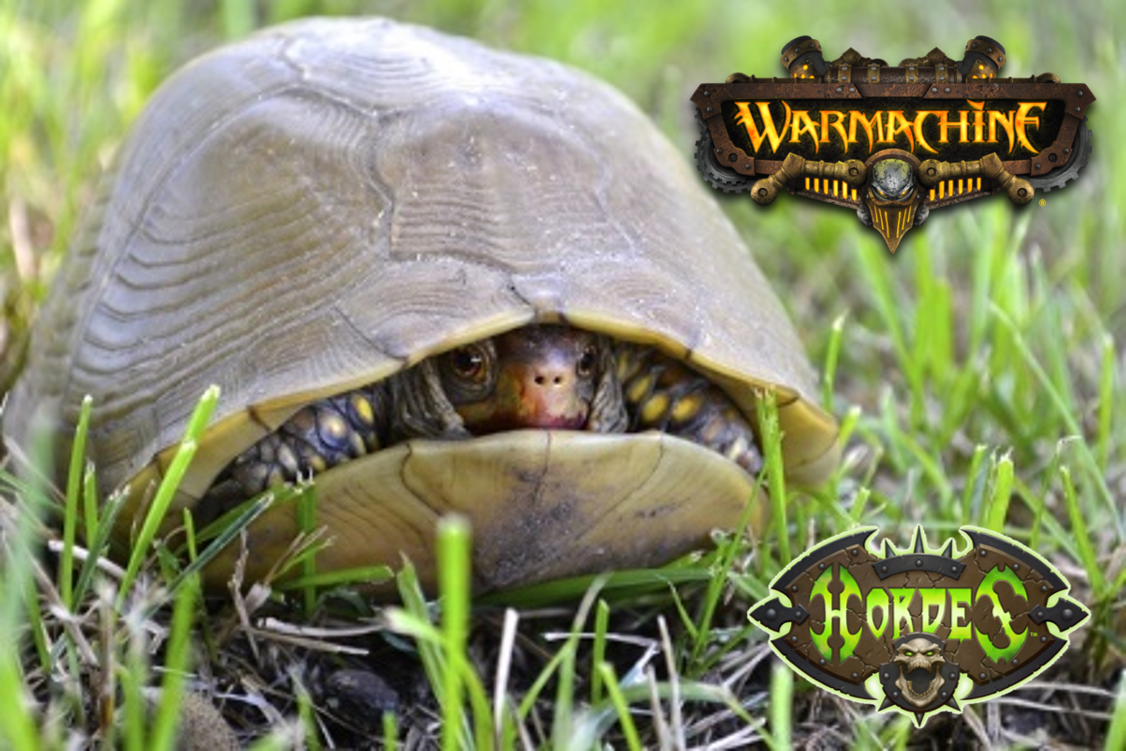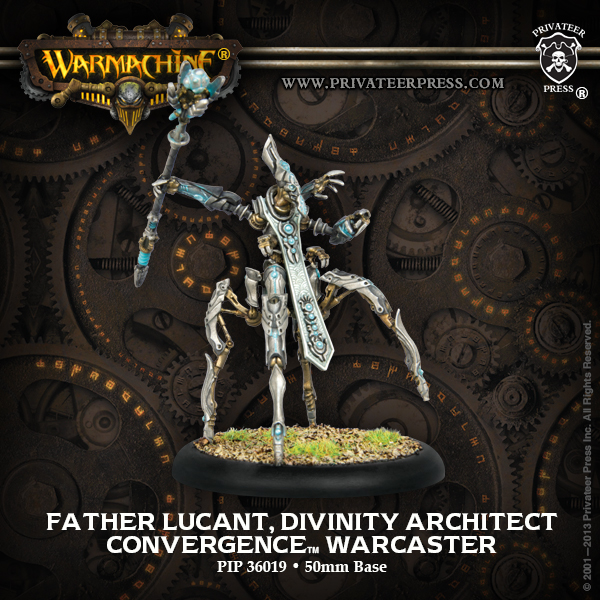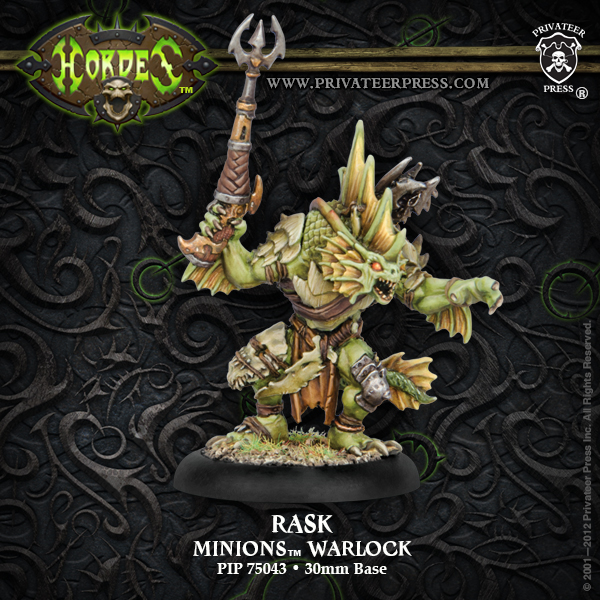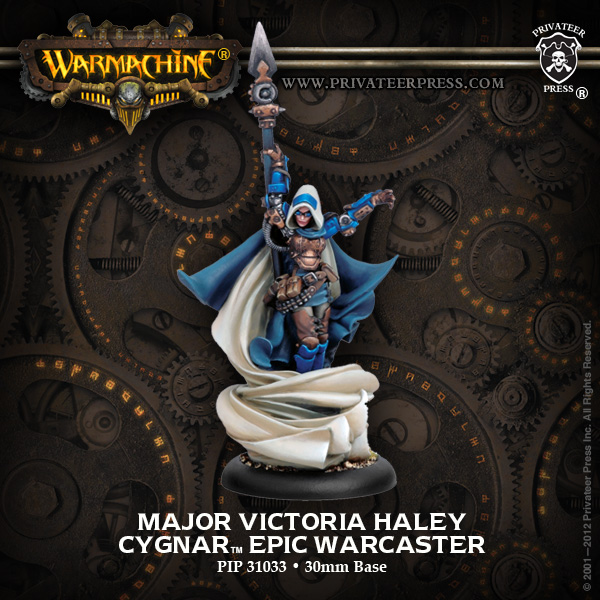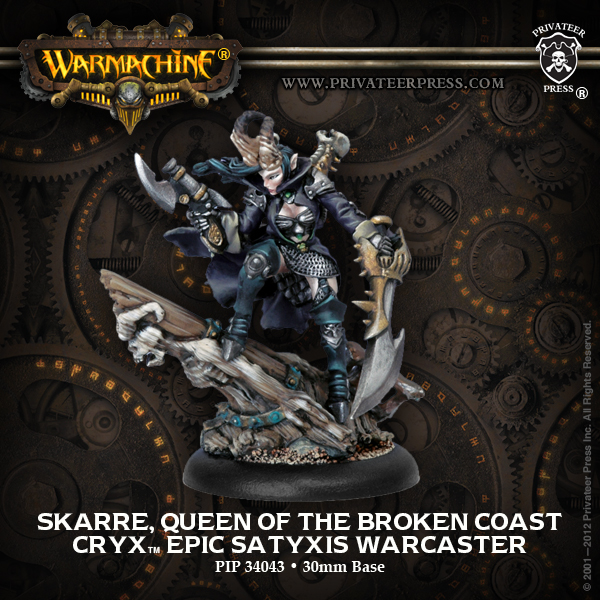Warmachine: Best of the Best – Defensive Feats


Ranking the top three Defensive Feats in Warmachine and Hordes.
Chalkboard here from Chalkboard War, continuing my series of articles on Warmachine and Hordes that examines the “Best of the Best” attributes across all models and factions. We’ll examine the top Feats, Spells, Abilities, Weapons, Stat Lines, Damage Grids, and anything else that appears on model entries in the game. All to give you a sense for which models are among the best on those categories.
This Week, Defensive Feats. These are fundamentally Feats that keep your force alive. They may buff your own defensive abilities, or cause your opponent’s attack to be blunted. With the right timing, these Feats can utterly swing the state of the game in your favor.
So let’s get right to it! The following are my list of the top three Feats in Warmachine and Hordes. At the end is a bonus “Dishonorable Mention” for the worst so-called Defensive Feat out there.
Number Three: Father Lucant
I had to include one of the static “+X to Y defensive stat (plus maybe this ability)” Warcasters or Warlocks in the discussion. There are a fair number of them: Lucant, Stryker1, Harkevich and Durst all boost ARM to brutal levels. Mordikaar and Fyanna2 both boost Defense by 3 and free up models on misses. And don’t forget Ragnor’s ability to subtract a die from damage rolls or Doomy3’s healing-after-hit that is equivalent to a +5 ARM swing on average for models in his battlegroup. It’s hard to judge any of these to be massively better or worse than the others, as they depend a lot on what is included in the list (see how powerful Fyanna2 is with serpentine models) and what the opponent is fielding.
I picked Father Lucant because he seems to be in the absolute sweet spot for this type of Feat overall. The ARM boost is punishing, and matters on his stuff thanks to high base ARM values on all sorts of models in the faction. The other boost that Lucant has is the fact that repair rolls are increased by 2. Given the amount of repair that Convergence can get out, that’s a critical bonus to the Feat. One Optifex Directive unit on Feat turn can repair an average of 15 points of damage across three different targets as needed.
That means that Lucant’s force is likely to arrive on Feat turn in near-perfect condition if played right. For many of the others in the list above, work in earlier phases can help mitigate the impact of the Feats. For Lucant, his Feat can absolutely erase earlier damage and then make another round of extremely difficult progress for the opponent. Grievous Wounds can complicate things some, but even then ARM boost from the Feat is still extremely difficult to damage through. Certainly the others listed above can all be powerful, but I think on average Lucant has nasty Defensive Feat turn for almost any force to face.
Number Two: Rask
What’s better than a healthy ARM or DEF bonus and arriving at the center-line fully repaired? How about opponents not being able to engage in the first place? Enter: Rask.
Now, there are some similar Feats out there (Witch Coven and Kaelyssa to a lesser extent), but Rask has one of the best slow-you-down, no-enagement Feats. It’s simple: models in his control area cannot be targeted by attacks, charges, or slams from models more than 5″ away from them. Not only does it neuter shooting and spells, but it brings any models that want to get attacks in to very dangerous territory. While Witch Coven can get occasionaly get caught by long-range shooting or spells, Rask’s Feat focuses on his own models–which is key.
This Feat is not only protective, but it forces poor choices from foes. Sure, I can trample in and then buy attacks–but that’s usually not going to be enough to stop anything in his list. I can run to engage, but he’s likely to have the models around to free up key pieces. I can stay back, but that might mean losing ground or advantage on scenario. The Feat is a huge edge for Rask, as it can also force counter-Feats in many match-ups. For near-complete protection, this is a pretty good start.
Number One: Major Victoria Haley
My hope is that this one comes as a surprise to no one. Haley2’s Feat remains one of the most powerful in the game. Forcing your opponent’s models in her whopping 18″ Control Range (with a Squire) to sacrifice either movement or combat action? Simply punishing. Combined with multiple spells that can turn models’ facing away from her force, this can even shut down enemy shooting.
Simply put, it’s one of the best ways in the game to absolutely blunt your opponent’s attack. For players not ready for it, it’s a fast track to whatever loss condition the Haley2 player is going for. For players who are prepared for it, it’s still a brutal obstacle to deal with. Haley2’s Feat is pretty much THE signature defensive Feat in the game. While I loathe seeing her in an opponent’s pairing, I cannot deny that she’s a powerhouse and the Feat is central in that calculus.
Dishonorable Mention: Skarre, Queen of the Broken Coast
For the record, I still think that Skarre2 has many reasons why she can be an effective Warcaster. And those reasons may include her Feat. Call it a bit of Mark II hangover, but her Feat in Mark III just seems underwhelming. She can select up to 5 models in her 14″ control range, suffering a damage point for each. Friendly models get +5 defense and cannot be charged, while enemy models suffer -5 to attack rolls.
Where I think this does have some play is that it doesn’t specify non-Warcaster, non-Warlock. So perhaps Skarre is a good foil to those assassination Warcasters/Warlocks who want to get to their charge range and then mash you in the face (Butcher3, Rhyas, Garryth, Kromac1, etc.). Up 5 Defense on Skarre2 herself plus no charges, while -5 to that Warcaster’s attack rolls seems pretty good. But unless you can seal the deal on the opposing turn, I’m not sure it does anything more than delay the inevitable. With a fair number of ways to knock down models, the friendly boost isn’t as effective as it might seem. Sure, she can protect crabjacks, but many other Cryx models don’t have an easy method of protection from that effect. Managing to stick a Stationary, Paralyze, Shadow Bind, or Blind effect can all do the same.
Likewise, the enemy penalty, while strong in magnitude, is limited by the numbers to which it can be applied. It feels like this is one of those Feats that makes one say “well, I’ll just use these models rather than those.” It’s simply lackluster compared to other Defensive Feats, as there are too many gaps in the defense it provides.
~ Does this ranking fit your thoughts? Did we miss a critical attribute? Was a great model overlooked, or a powerful interaction missed? Is Number One really that good? Do you think the “Dishonorable Mention” is not so dishonorable after all? Let us know in the comments below!
To watch the worst of the worst hit the tabletop, check out Chalkboard’s Warmachine and Hordes blog at:

